Report 1 07/02/25 - Report 2 06/03/25 - Report 3 29/03/25 - Report 4 07/04/25
REPORT 4: (7th APRIL 2025)
Mileage: 3638km
Well, that went fast. Although to be fair, our extended time with the Toyota C-HR Limited was only 2 months, not the 3-or-more that’s usual for a long-term test.
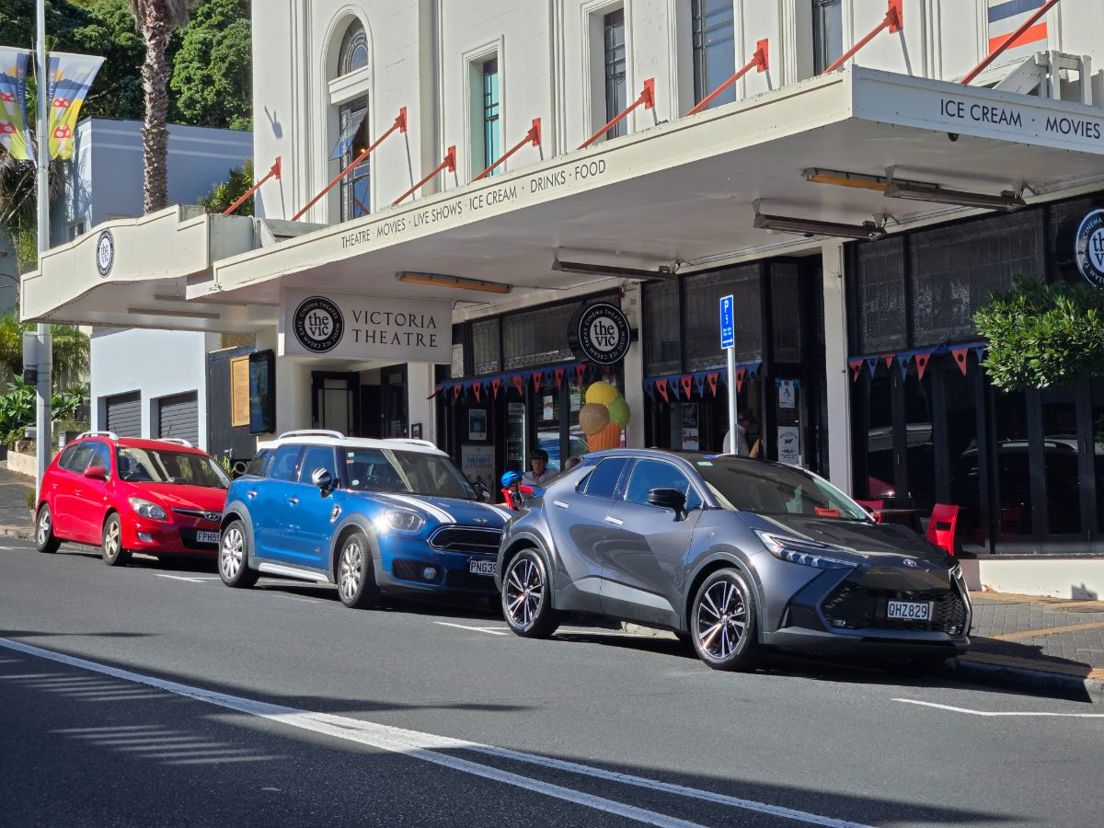
Not to worry. We still managed to pack quite a bit into that time and put as many of the C-HR’s claimed talents to the test as we could. And we did manage to finish it all off with a little road trip. But more about that in a minute.
There’s something a bit special about this car compared with other Toyota crossovers: the design, the cabin ambience, the refinement.
When Toyota New Zealand announced the full lineup and pricing for the second-generation C-HR at the end of 2023, it made a rather bold/odd statement: the new model was “arguably the most luxurious new passenger vehicle available” from the brand.
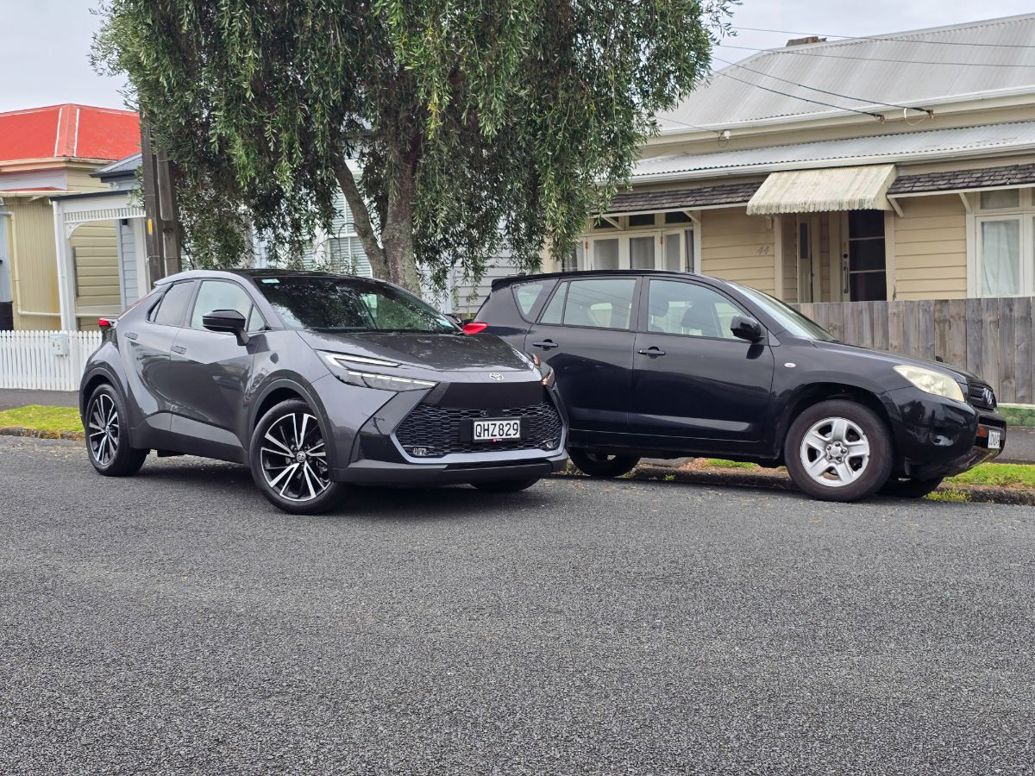
At the time, that struck us as a weird thing to say about what’s essentially a city SUV: larger than a Yaris Cross, but smaller than a Corolla Cross and certainly well down the ladder from the likes of the big-selling RAV4. Very far from a luxury vehicle, in other words.
The hybrid powertrain is at its best in city driving of course, trickling along silently on battery power for much longer distances than you might expect (the regen works fast).
But know what? After our long-term time with the C-HR, we kinda get it. There’s something a little bit special about this car compared with other crossovers in the Toyota stable: the design, the cabin ambience, the refinement. It certainly punches above its weight in terms of occupant experience.
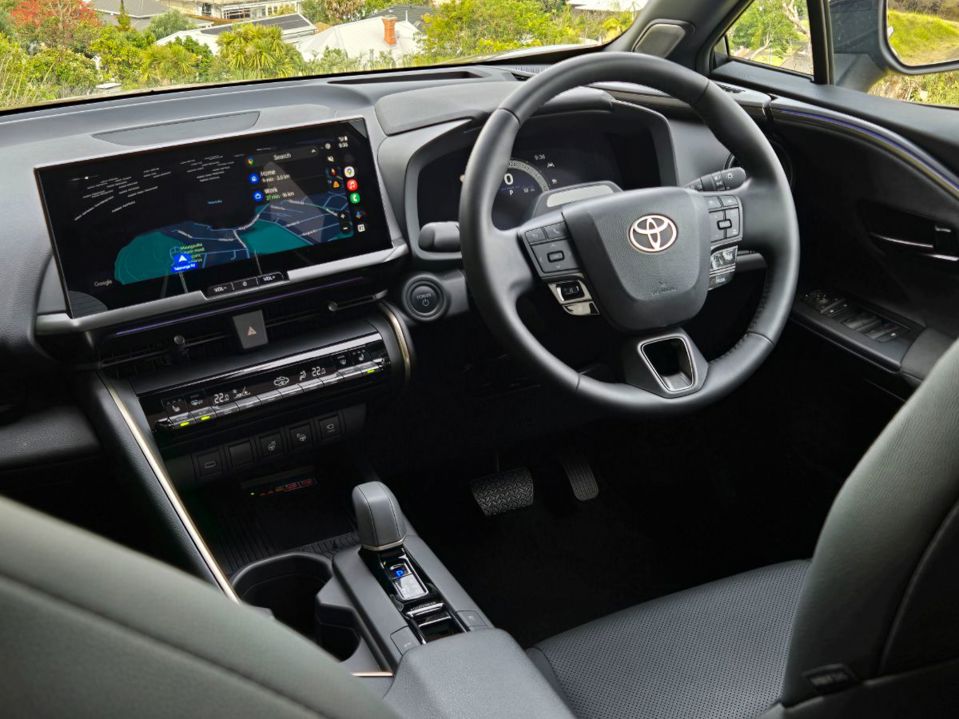
To understand why, you need to know where the C-HR came from. The first-generation model was designed primarily for the European market, at a time when Toyota was still hell-bent on proving that it could take risks and make interesting cars.
While CVT is never the friend of the press-on driver, for cruising at motorway speeds it’s brilliant because it simply settles at the lowest possible engine speed.
So the C-HR was fashion before function, with a wacky body shape that entailed huge compromises in packaging and especially rear-seat space/visibility. The cabin was designed to look totally different to any other Toyota. It was all a bit concept-car-like.
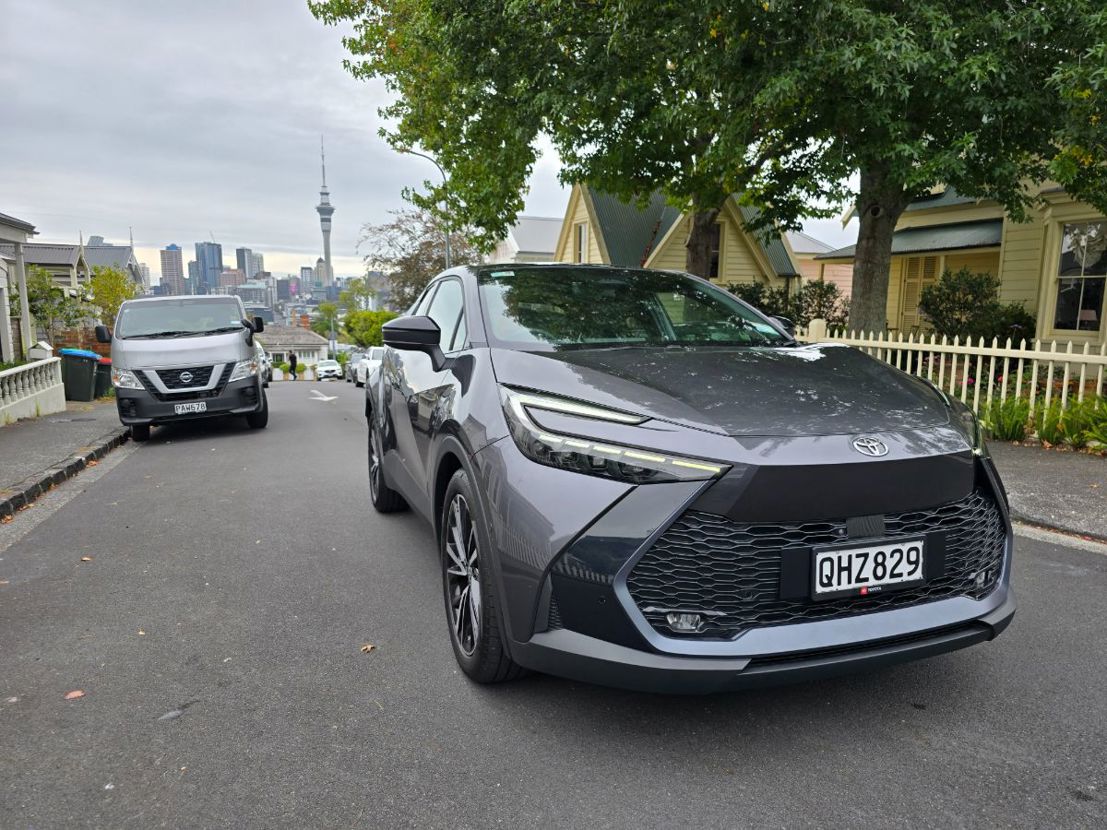
It could have been one-model-and-done, but that first C-HR sold well enough to warrant a second generation, which is slightly more practical but even more outrageous-looking. And really quite premium-feeling inside.
No wonder we’ve enjoyed our commuting so much. The cockpit-like cabin does genuinely feel a bit special and the main touchpoints and switchgear have a quality feel.
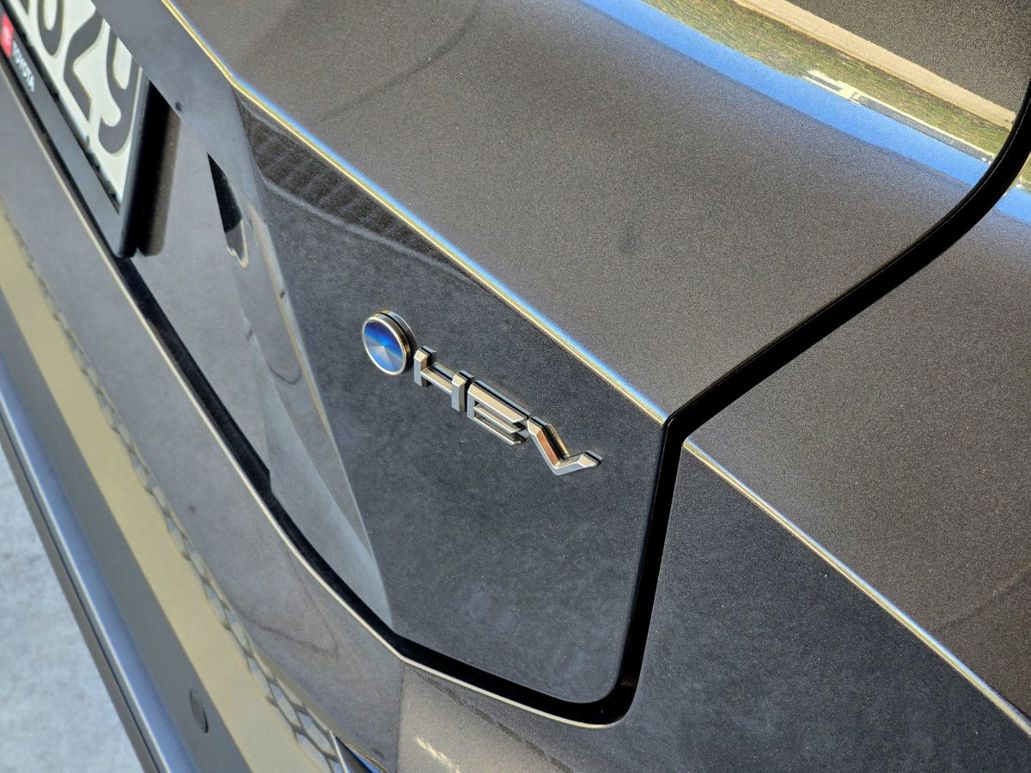
The hybrid powertrain is at its best in city driving of course, trickling along silently on battery power for much longer distances than you might expect (the regen works fast). The less you have to put your foot down the better of course, because the e-CVT transmission can only do much before it flares up and sounds a bit annoying.
Hybrid power has meant we’ve kept the company fuel card largely holstered. You might remember we tried some fuel-sipping silliness and got some pretty incredible one-off figures (3.1l/100km at one stage), but even an average of 4.5l/100km is deeply impressive for crawling through city traffic twice a day.
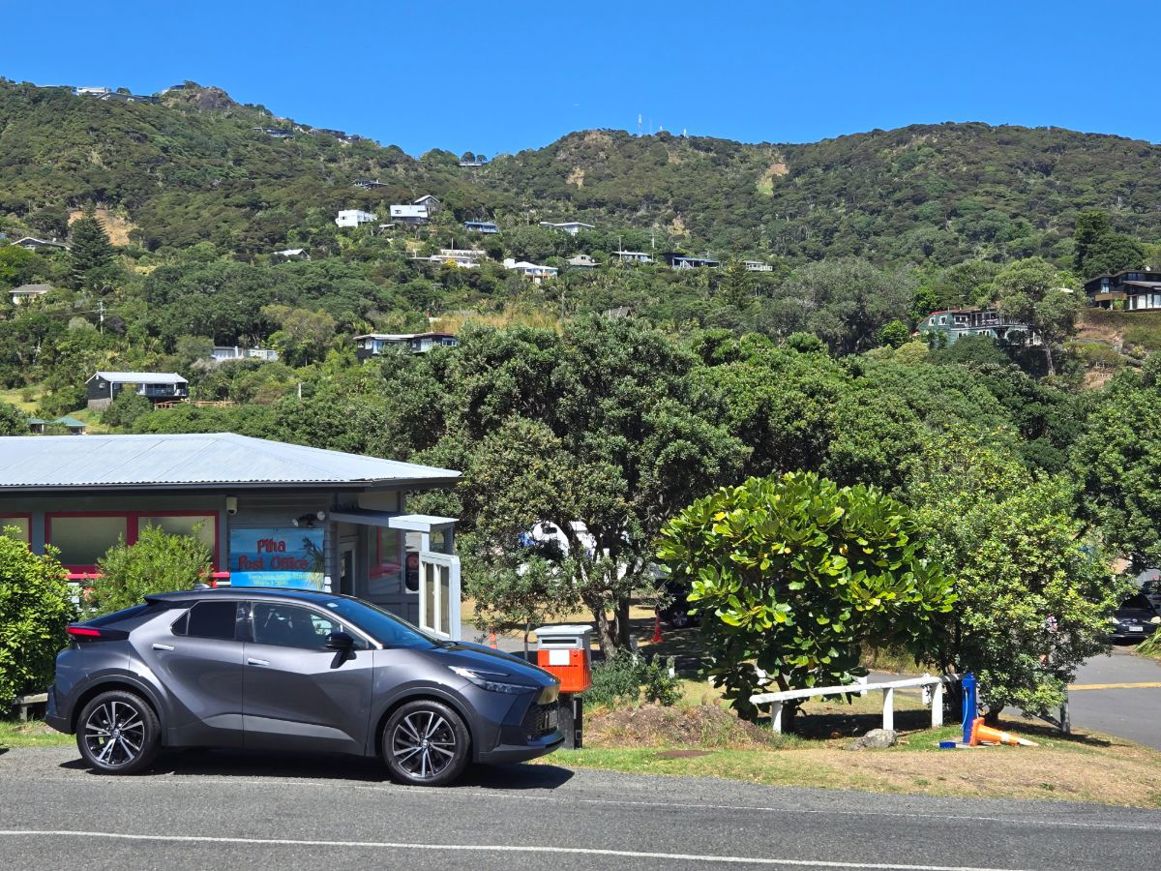
The Toyota spent plenty of time on the motorway during its time with us (it’s part of an average Auckland commute, after all) and made the occasional foray to the outer reaches of the city; one sunny Sunday in Piha springs to mind.
But as our extended review drew to a close, we were mindful that we hadn’t done a proper road trip in the C-HR. True, it’s likely that many cars of this size and genre probably never leave town anyway; but given how swish the little Toyota feels for a city runabout, we thought we’d stretch its legs and see what happened.
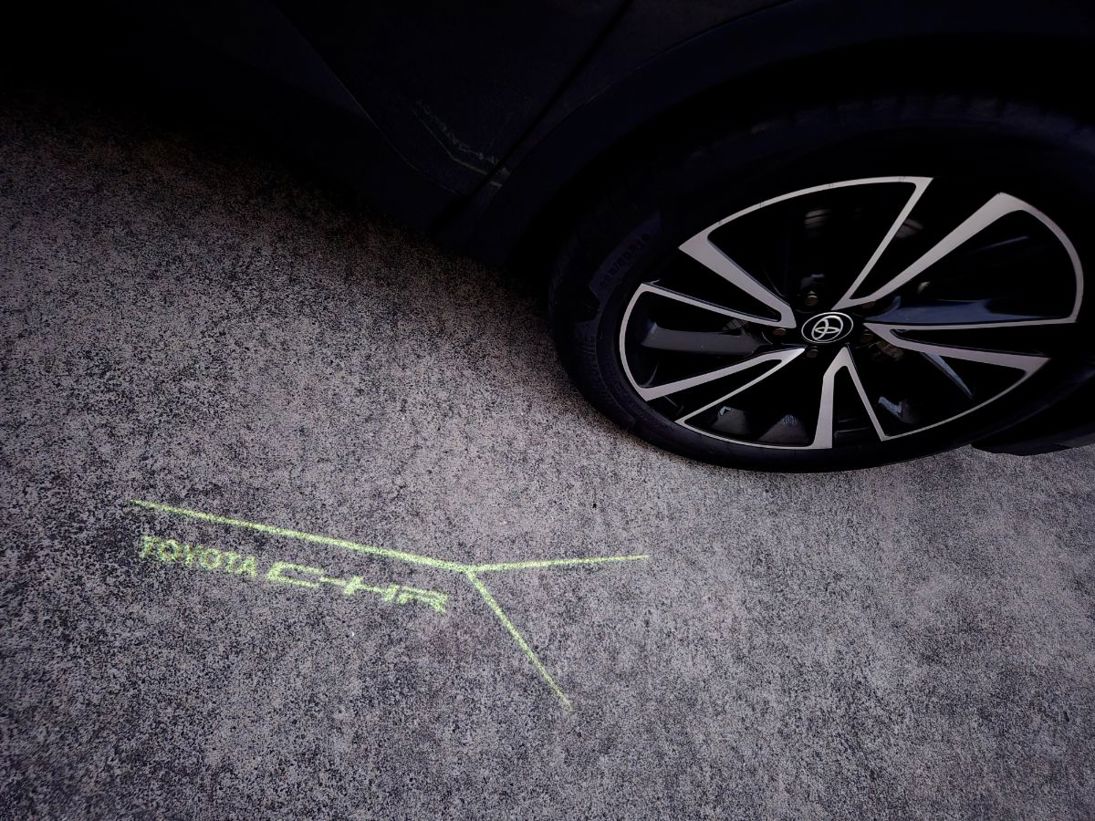
A 400km round-trip deep into the Waikato presented itself at exactly the right time. That’s over 200km of motorway/expressway driving at 100-110km/h, plus some good old fashioned winding Highway 1 on coarse chip.
It probably won’t be a revelation when we say that the C-HR has commendably long legs for driving like this, at least with 1 or 2-up. You still wouldn’t want to be stuck in the back all day, although this new model is much better than the previous one in that regard.
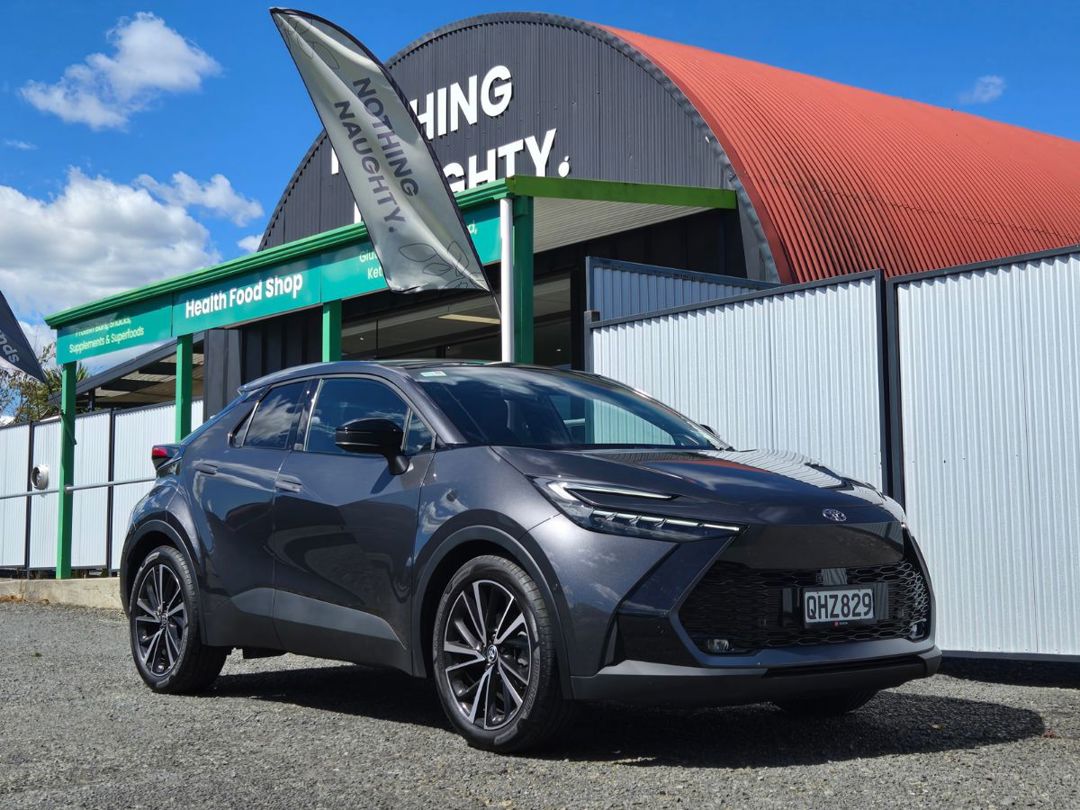
While CVT is never the friend of the press-on driver, for cruising at motorway speeds it’s brilliant because it simply settles at the lowest possible engine speed. The C-HR is incredibly refined anyway: road and wind noise is very well suppressed and gives the Toyota the feel of a much bigger car.
We leaned heavily on the adaptive cruise control, which is another technology that works pretty well with CVT. The 1.8-litre hybrid powertrain is no ball of fire, but it’s torquey enough to provide smooth, seamless acceleration to the cruise control when required.
Our trip was also a reminder of how well sorted the C-HR’s active driver assists are. Lane-keep is activated by a physical button on the steering wheel (so you can easily choose to turn it on or off) and when you do use it, the “tracing” function keeps you in the middle of the lane, rather than letting the car wander slightly one way or the other and them jumping in to correct it.
Even the driver distraction monitor, which works via a small camera on top of the steering column, seems to work pretty well (which is something we almost never say). It only intervenes when you are actually looking somewhere you shouldn’t be, and the prompts remain subtle.
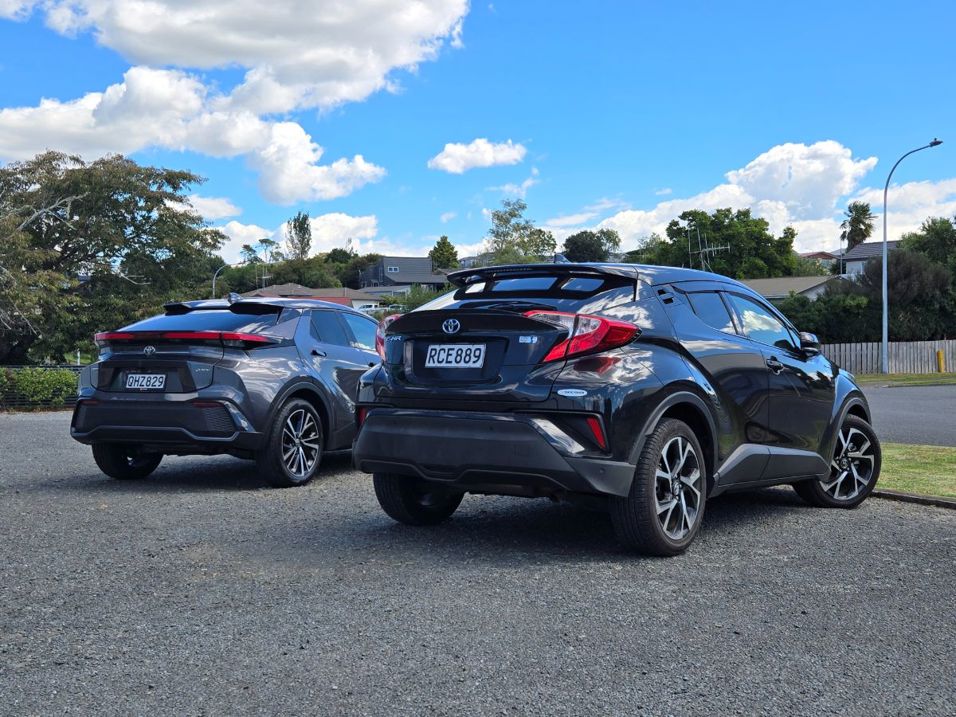
Only one real foible flared up. The wireless phone projection, which had performed faultlessly during two months of city driving, disconnected completely in a spot of poor cellular coverage (which seems to be needed for Apple CarPlay/Android Auto) and we simply couldn’t get it reconnected for half an hour, despite stopping and doing the full restart.
Okay, first world problems and you can still listen to audio via Bluetooth, but it’s annoying if you’re using Google navigation with traffic information (which we were). It happened again in the same spot on the return leg.
Our wrapup road trip once more confirmed a long-running Toyota hybrid theory: that these cars kind of settle on a fuel economy figure and stay there, no matter what you do with them. Our average for the trip was 4.5l/100km, which meant our average for the entire long-term test period was… 4.5l/km.
We achieved closure of another kind on this last trip, too. For the entire 2 months we’d been wanting to get a picture of our new C-HR with a first-generation model, which you’d think would be easy given there are squillions of them on the road. Yeah, well good luck finding one parked to get a happy snap. It rapidly became our white whale.
Sure, we could have just gone back to Auckland City Toyota and asked to pose our Graphite Limited next to one of the many, many OG C-HRs on the yard. But… boring. We wanted them in the wild.
In Tirau, while purchasing sustainable snacks at Nothing Naughty, we found one sitting all alone in the carpark with any number of possible posing positions available around it. It was even quite a good colour: black went well with our car’s Graphite grey. Click. Happy now.
REPORT 3: (29th MARCH 2025)
Mileage: 3015km
For a crack urban SUV, the only thing as important as going is stopping. Or rather, parking; which is what you usually have to do when you stop.

On the surface, things don’t look brilliant on that front for our Toyota C-HR long-termer. While its footprint is pretty city-friendly (it’s just 4360mm long), that wacky body shape is fashion-before-function and rearward visibility is pretty poor. Even worse when it’s raining, because there’s no rear wiper and city driving doesn’t really involve enough aero-velocity to clear the glass.
However, it’s tech to the rescue, because the C-HR has a couple of ace features up its weirdly angular sleeve.
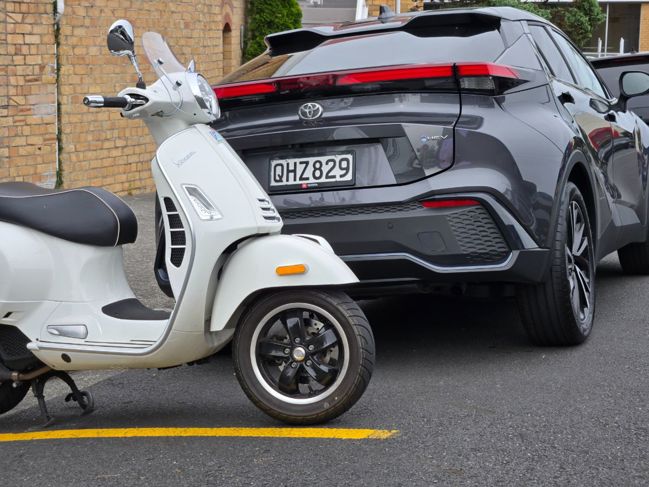
The first is a 360-degree camera system called Panoramic View Monitor with Dynamic Guidelines and Underfloor View.
For a crack urban SUV, the only thing as important as going is stopping. Or rather, parking.
It does exactly what it says in the name, by giving you a full surround-view (it can even give you once-around view of the perimeter of the vehicle in one quick sweep), suggest where you might end up with guidelines overlaid on the picture and even give you an “invisible car” picture of where you are and what you’re doing.
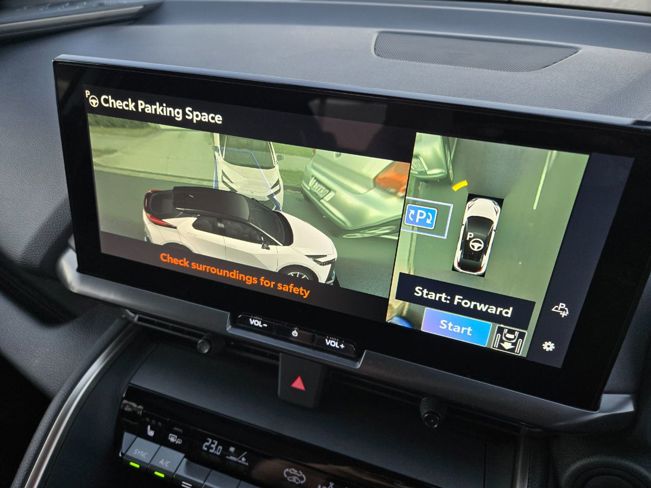
It's a bit like some flash 4x4s, except with this one you’re avoiding running over a Lime scooter rather than edging along a clifftop.
Toyota TeamMate Advanced Parking Assist is standard. That’s automatic parking to you and I, which is admittedly not a feature for everyone.
The more comprehensive some surround-view cameras get, the more confusing they can look. But the Toyota’s is pleasingly clear, with simple graphics and rapid changes of view on-screen to focus on what’s important in real-time.
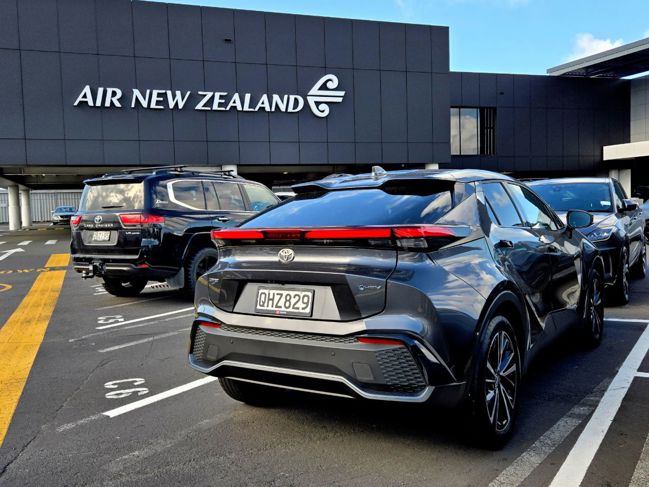
Our C-HR Limited is up the range a bit (only the GR Sport is above it), but the full camera setup is standard on all models. That’s impressive, although you could also argue any C-HR needs it.
The full camera setup is standard on all models. That’s impressive, although you could also argue any C-HR needs it.
Also standard is Toyota TeamMate Advanced Parking Assist. That’s automatic parking to you and I, which is admittedly not a feature for everyone. Indeed, many who pride themselves on their parking prowess might be quite dismissive.
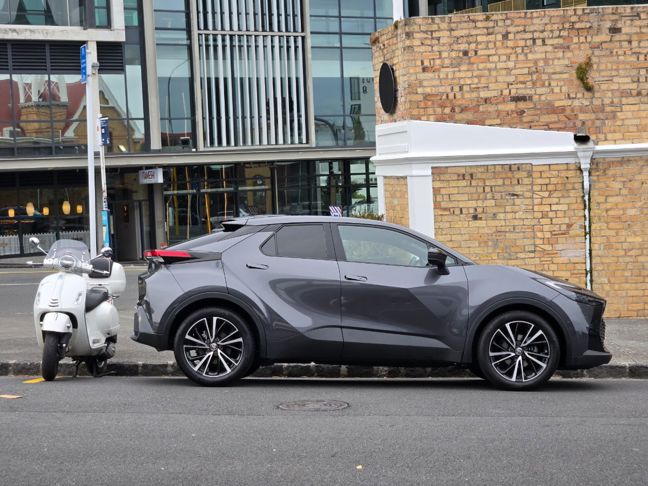
The C-HR’s is pretty advanced. Once you’re stopped beside an appropriate space, all it takes to activate is the push of a single (physical) button: the infotainment screen will show you a bird’s eye view of the space, ask you to okay it and the rest is up to the car. It does all the steering and braking and yes, it does seem to go excruciatingly close to kerbs and other vehicles at times, but it hasn’t let us down yet. Although it has rejected the odd space for being too small, at which time we’ve just parked in it anyway. Nothing wrong with a little caution.
It can do parallel (against the kerb) or side-by-side, too. That’s pretty clever.
Is it quicker than a competent human? Absolutely not. Because it’s fully automatic, there’s often a bit of shuffling back-and-forth to get into position for a clean sweep into the space, which can be annoying for traffic stuck behind you. But you can mitigate that by getting the hang of the appropriate distance to leave when stopping next to your aspirational space.
We can’t say we use it all the time… or even very often. But it’s there if you want it, it’s quite clever and it does have its uses in a parking building for example, where you want to reverse into a tight spot and make sure your car is dead in the middle.
The C-HR also has a dizzying array of active safety stuff, some of which is especially handy in the city. Safe Exit Assist will warn you if you’re opening a door into the path of an oncoming cyclist or car, and Rear Cross Traffic Alert will sound if you’re reversing out of a space or driveway into somebody else’s way.
We like the way the all-speed dynamic cruise control works so smoothly with the hybrid system when it comes on and off EV mode (which it does often), and we’ve come to appreciate the Speed Sign Recognition for keeping tabs on the local limits… because the authorities seem intent on changing them all the time.
REPORT 2: (6th MARCH 2025)
Mileage: 2685km
There’s a little game we like to play with hybrids, especially Toyota hybrids and ideally Toyota long-term hybrids (this isn’t our first one). It’s called "What’s the Best Fuel Economy You Can Get on a Commute to Work?". So we do need a catchier title. But it’s only right our C-HR Limited long-termer joins in.
We’ve been doing this ever since we tried an impromptu challenge with a RAV4 long-termer a few years back, in the heady days before Covid-19 when we all came into the office, all the time.
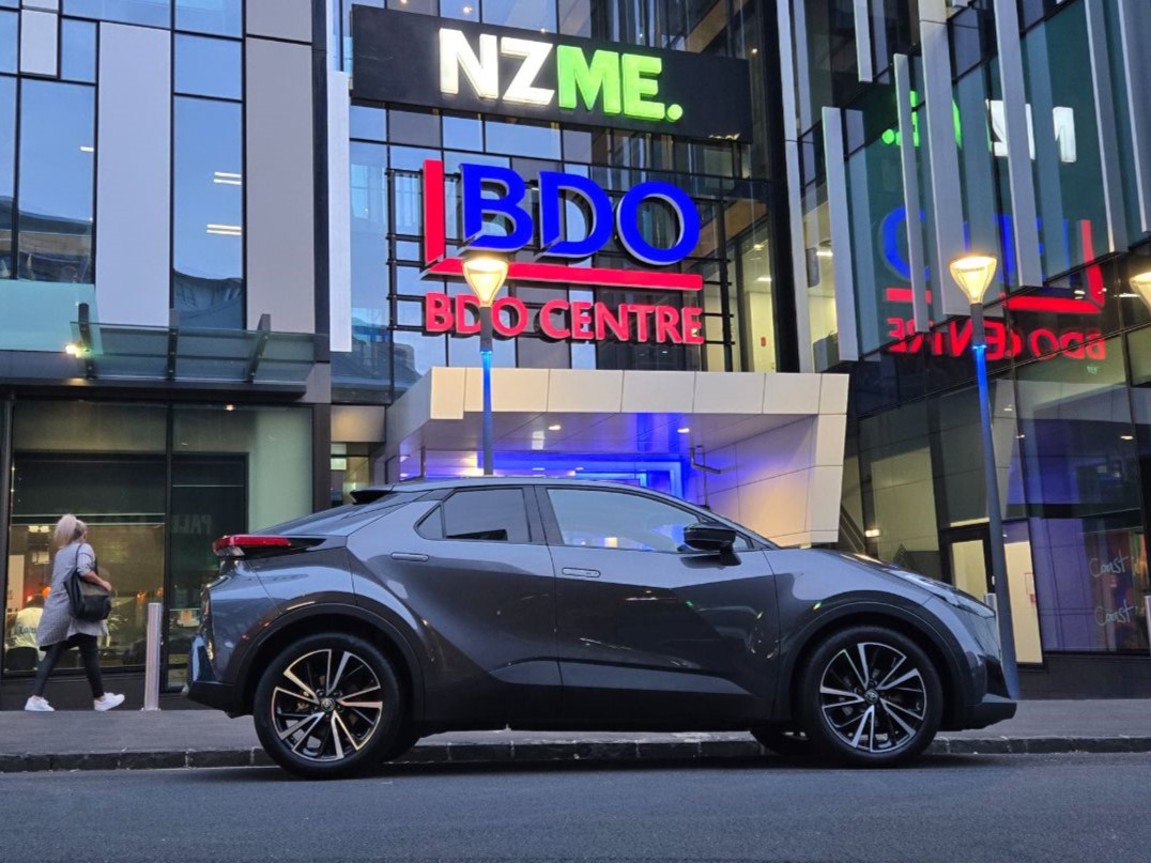
My all-time time record is a one-off 2.9l/100km in a Yaris, achieved in ideal conditions in a very light car with the then-latest (2020) lithium-battery hybrid setup.
Ideal conditions: what are they? Well, Toyota hybrids are consistently very thrifty in multiple driving scenarios; they tend to arrive at an average and stay there regardless of what you do with them, which is the genius of the technology.
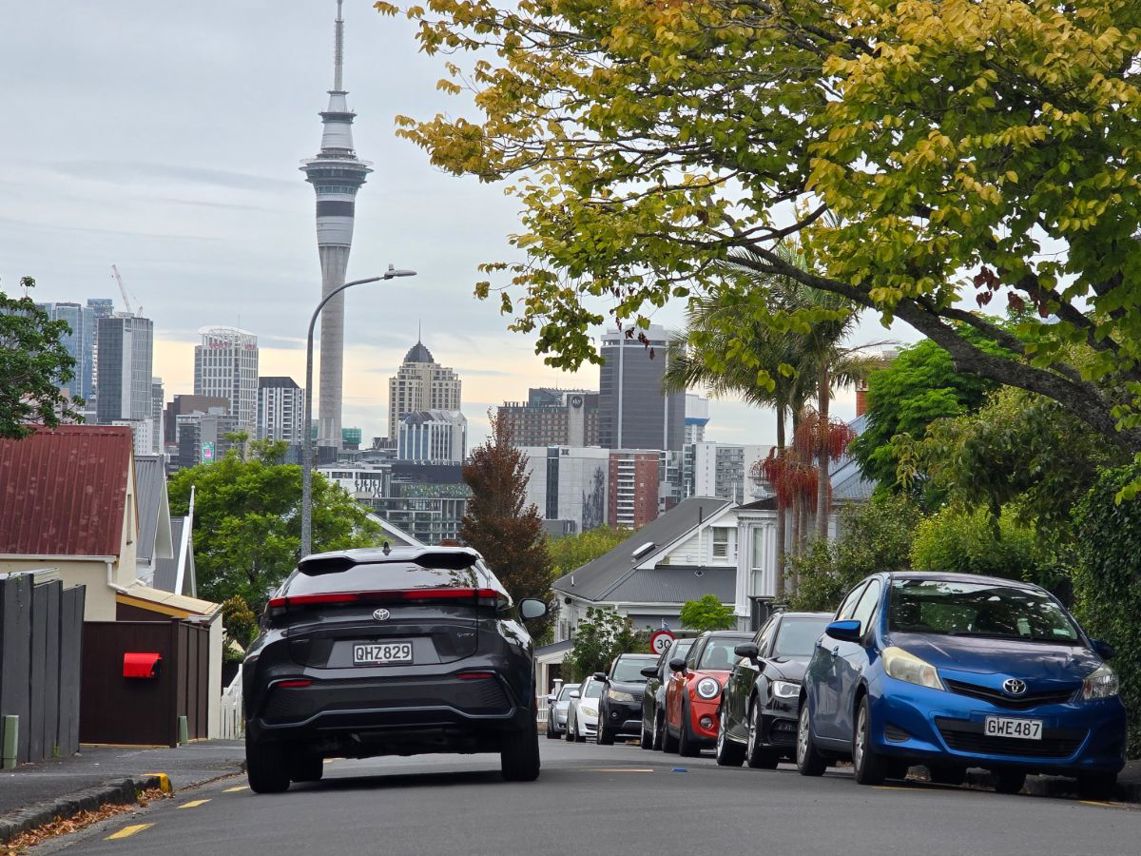
But if you want to stack the deck completely in a hybrid’s favour, you need low speeds and heavy traffic, with lots of stopping and starting.
As we know, a hybrid of the type Toyota uses has a tiny battery and electric motor that can propel the car for very short distances in EV mode, albeit only 1-2km (at best) on a full charge. What the technology is really for is to recapture energy normally lost during coasting, deceleration and braking, so that the electric motor can do its best to take the load off the petrol engine. It’s a simple idea that Toyota has honed to perfection in many models over nearly three decades.
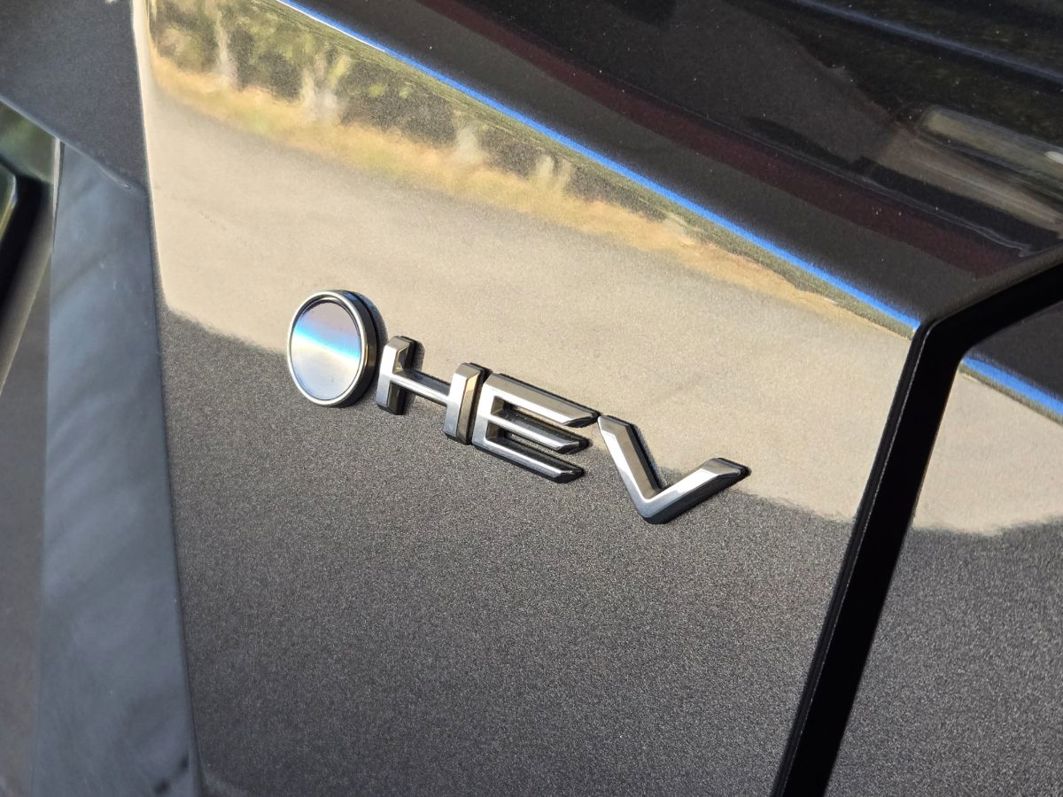
The basic principle hasn’t changed, but we’ve noticed newer Toyota hybrids getting ever-better at regenerating their batteries during every little lift of the throttle, meaning optimum battery assistance at all times in traffic. Which in turn means optimum fuel economy.
Yes, yes, I know you’re desperate to learn the results for our little urban-SUV. Well, my morning commute is 13km (so 26km daily, using maths) and an even mix of urban (30-50km/h) and motorway (80-100km/h). But always pretty slow, despite relatively early starts. Like, it's dark and everything.
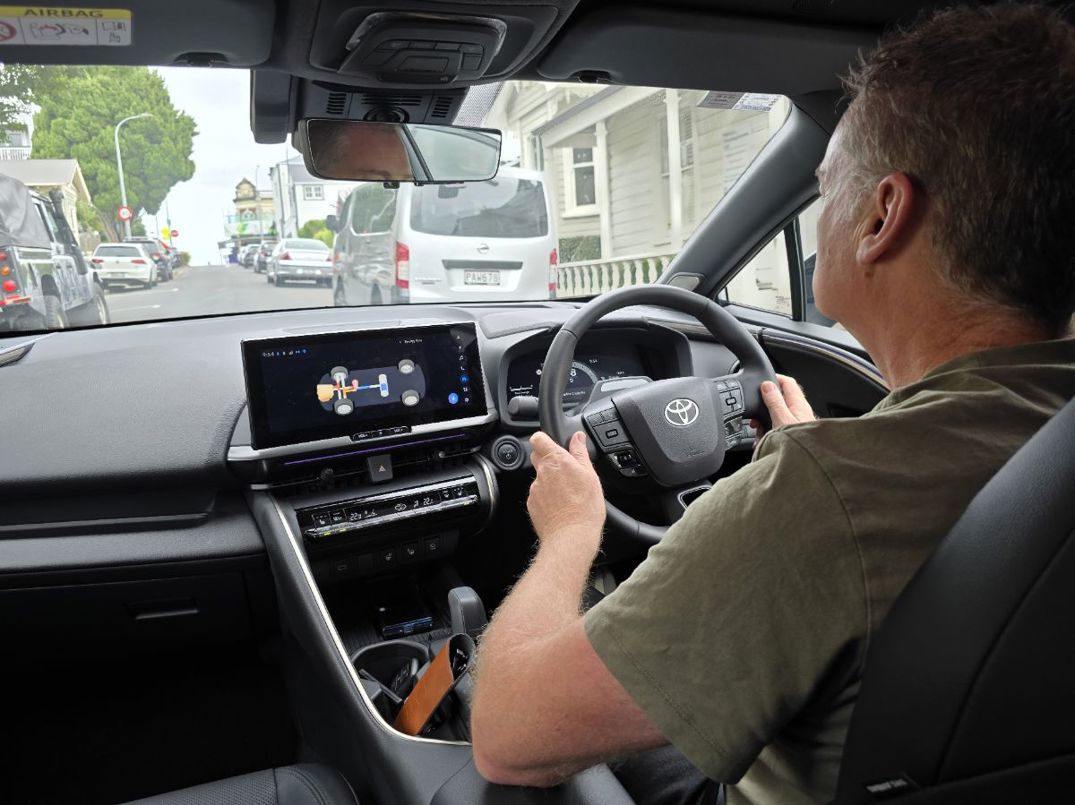
For a week, I reset the trip computer each leg (to keep all the other day-to-day driving out of the picture) and averaged the results, which got us 4.3l/100km. That's staggering in heavy traffic, especially when you consider it was achieved in complete leather-upholstered comfort and with excellent early-morning sounds from the Limited’s grunty JBL audio system.
I would like to qualify that result with a couple of things. First, it was skewed a touch by a couple of inexplicably high figures (in the 5l bracket); my single-best was 3.1l/100km and on that day, I didn’t really even feel like I was trying. The EV driving ratio (the C-HR can measure that for you) was 75% for the trip, which shows you just how much work that regen is doing.
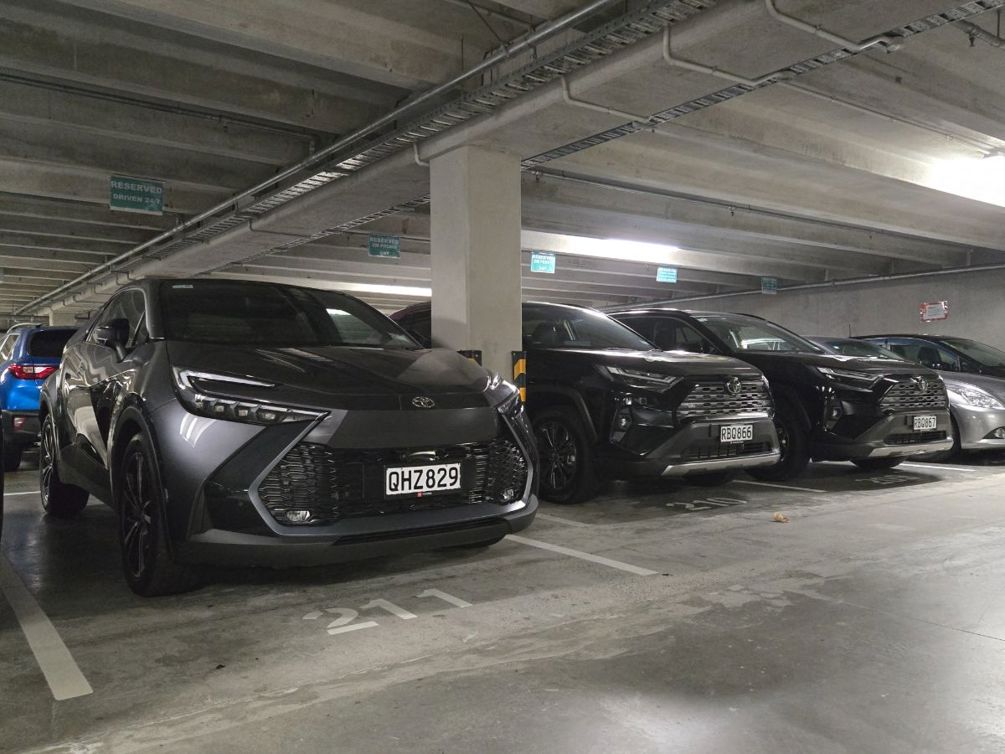
Speaking of which, I didn’t try too hard generally, beyond being mindful of smooth driving. Not sure how much difference the C-HR’s various drive modes really make, but I ran it in Normal rather than Eco because I wanted the drive to be… normal.
With the cruise control preset to the appropriate limit, I even flicked the C-HR onto auto-pilot a few times to really relax the right foot. Which all we know isn’t the most economical way to operate any car. What I’m saying is, I’m very confident in calling this a real-world result.
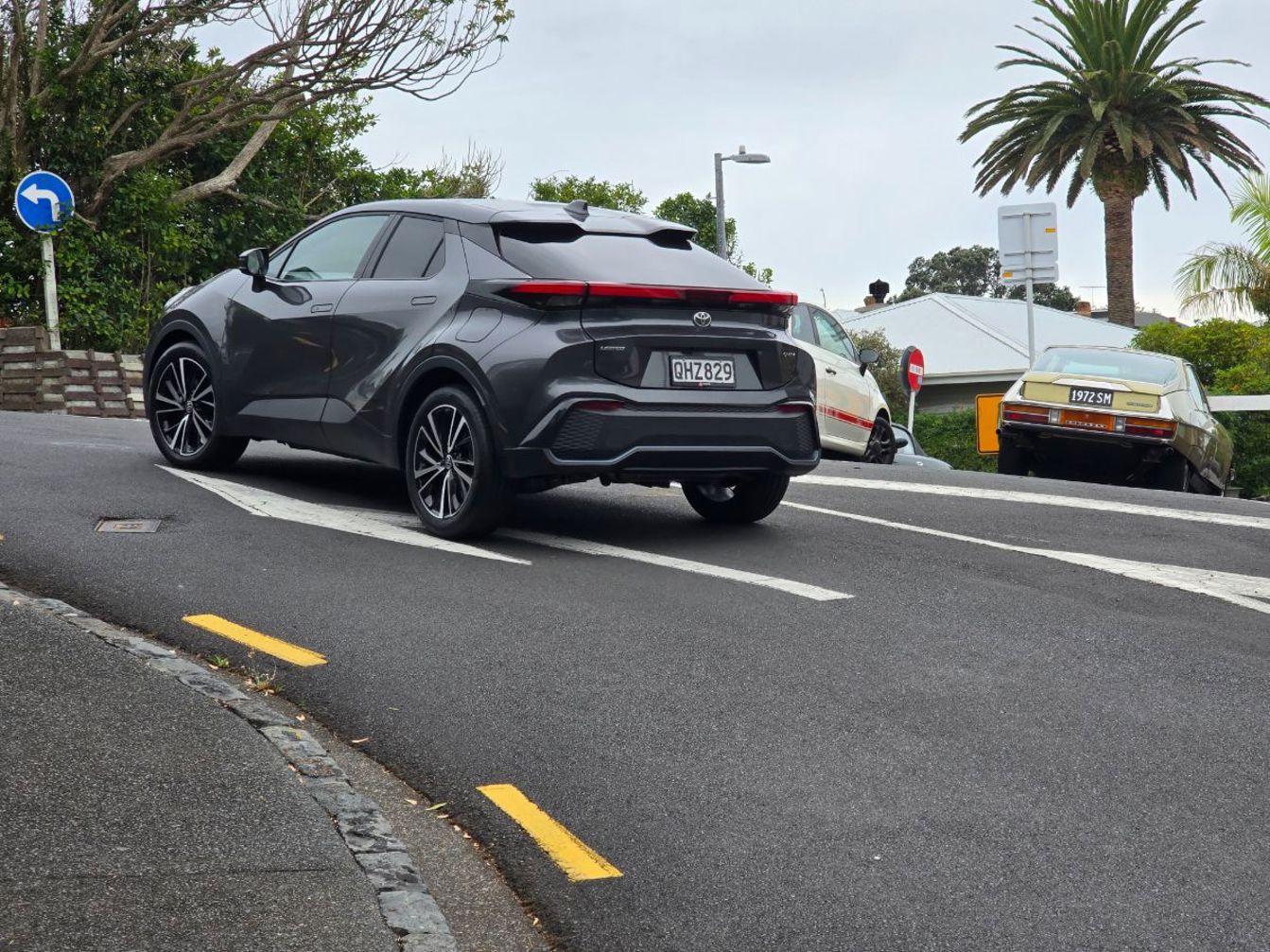
So eco-tick, but what irks at this stage? Well, Toyota has fallen into that old trick of pretending its curvaceous SUV is a “coupe” by leaving off the rear wiper. And that’s a pain, because when there’s early-morning moisture on the car it’d be nice to to be able to wipe it off, because it really collects on the glass at that extreme angle. There’s also a thing called winter that comes around every year.
And while the EV-style flush door handles look fancy, they're quite hard to get hold of when you have your hands full. When you drive away, they also clunk shut with a jump-scare noise. Takes some getting used to.
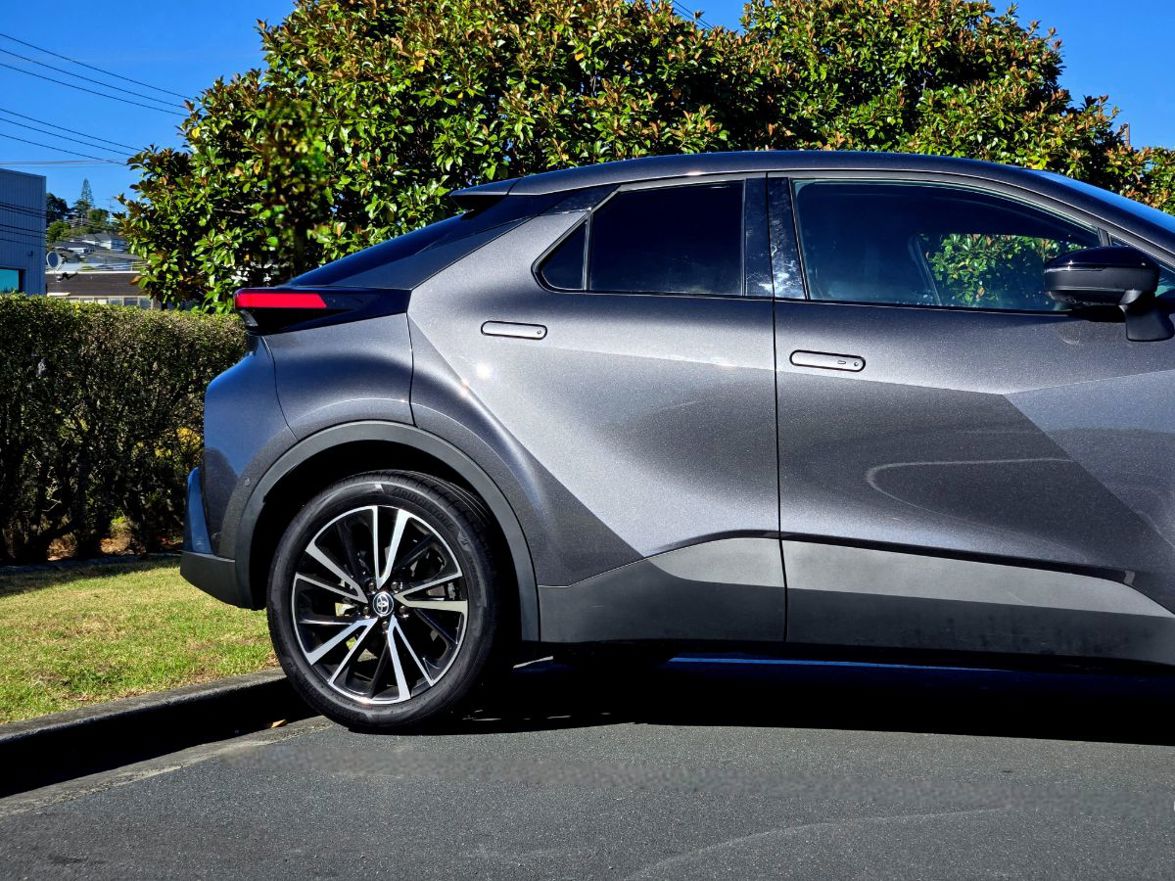
We’ve also previously expressed disappointment that our car doesn’t have the Two Tone Plus paintjob that’s available as an option on the Limited (although not in our specific Graphite paint finish).
We’ve noticed several times that in certain light, the wacky rear-quarter panel shape does actually make it look like there’s a different gloss-black finish on that part of the car. It looks great... which is even more annoying.
REPORT 1: (7th FEBRUARY 2025)
Mileage: 2000km
The Toyota C-HR is the latest addition to our long-term fleet. It was an easy choice, because it’s officially New Zealand’s best city SUV. And they’re not our words, remember, but the words of… oh hang on, they are our words.
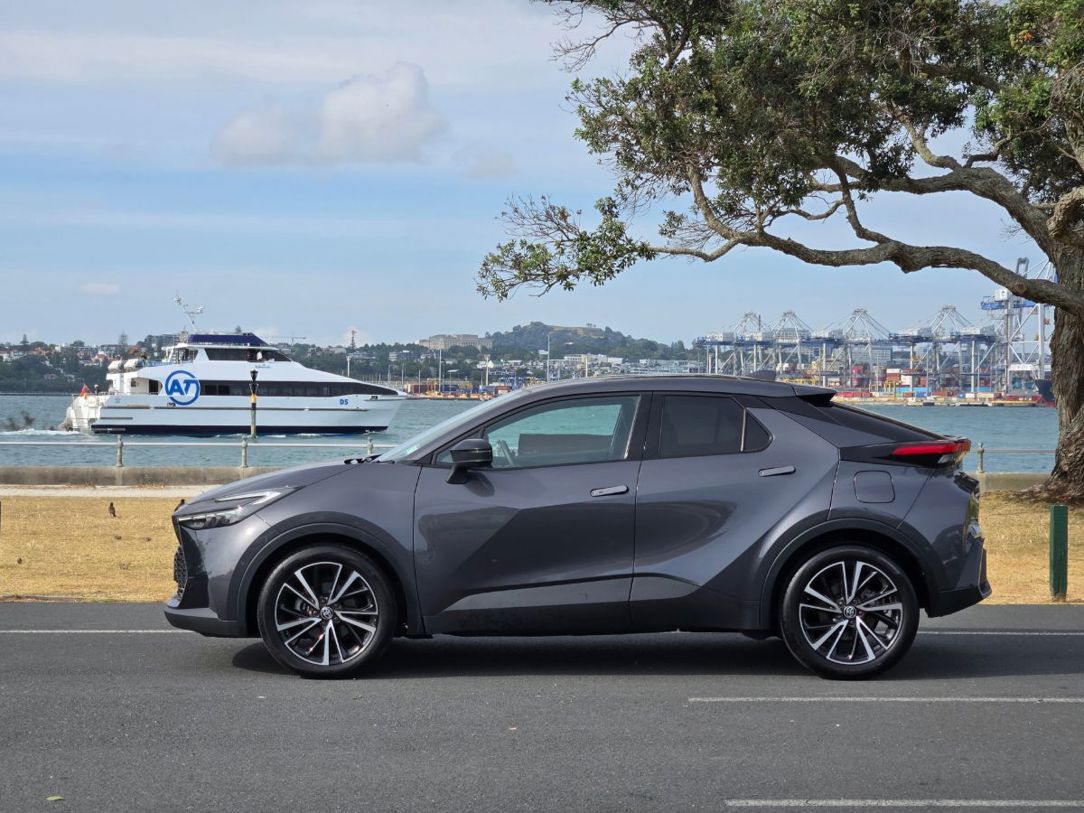
We awarded the C-HR Best City SUV of 2024 in our Car of the Year awards, which was probably the quickest panel decision in the history of COTY. No arguments whatsoever, and it even made the top three finalists for the overall award.
Our C-HR is the Limited version. While it would be not-exactly-correct to suggest we get to pick and choose these cars down to the fine details, for our purposes this is perfect
So yes, we like the C-HR very much. And speaking as city commuters, we like the size and fuel efficiency, but part of this exercise is also to find out what it’s like to live with the C-HR longer-term and over longer distances. Take it out of the city-SUV comfort zone. All in good time.
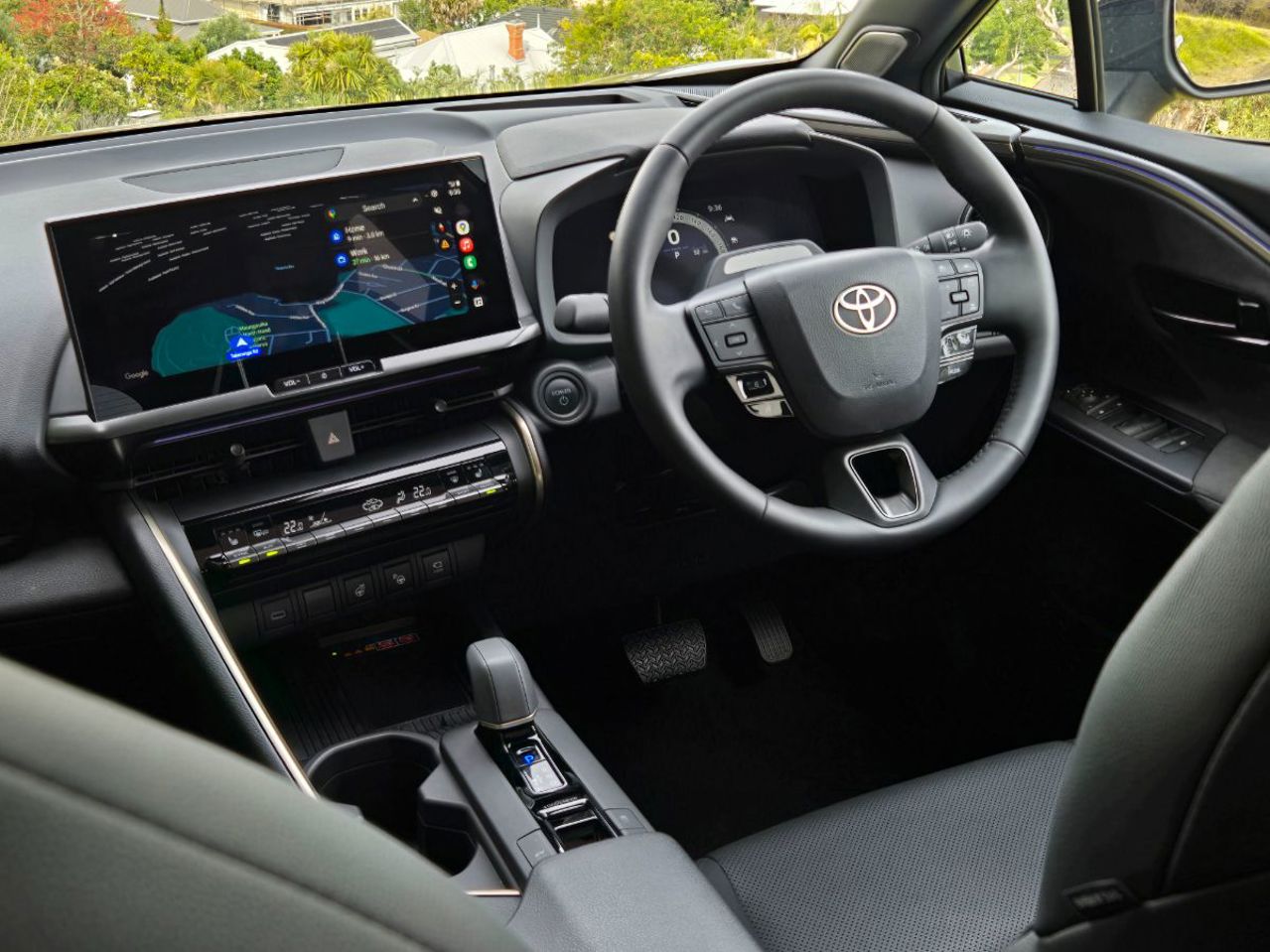
Our new C-HR is the Limited version. While it would be not-exactly-correct to suggest we get to pick and choose these cars right down to the finer details, for our purposes this is perfect. Our COTY class-win was based on road-test experience of the entry-level GX and top-flight GR Sport, which are very different cars (engines, FWD versus AWD) but uniformly impressive.
Limited adds heating for the steering wheel, head-up display, leather-accented seats and a panoramic roof. None of it strictly necessary.
So something nearer the middle fills out the review programme nicely. There are four C-HR versions: GX, GXL, Limited and that GR Sport. Our Limited is not exactly cheap at $52,990, especially when you consider the GX’s $45,990 sticker. But it’s a remarkably luxurious little car, which is part of the point: it’s 2025 and we’re in an era where premium doesn’t have to mean an oversized package. Nor does it have to mean a luxury badge: Toyota is now quite an aspirational brand to many and the C-HR is a cool thing to be seen in. Designed and built in Europe, dontchaknow.
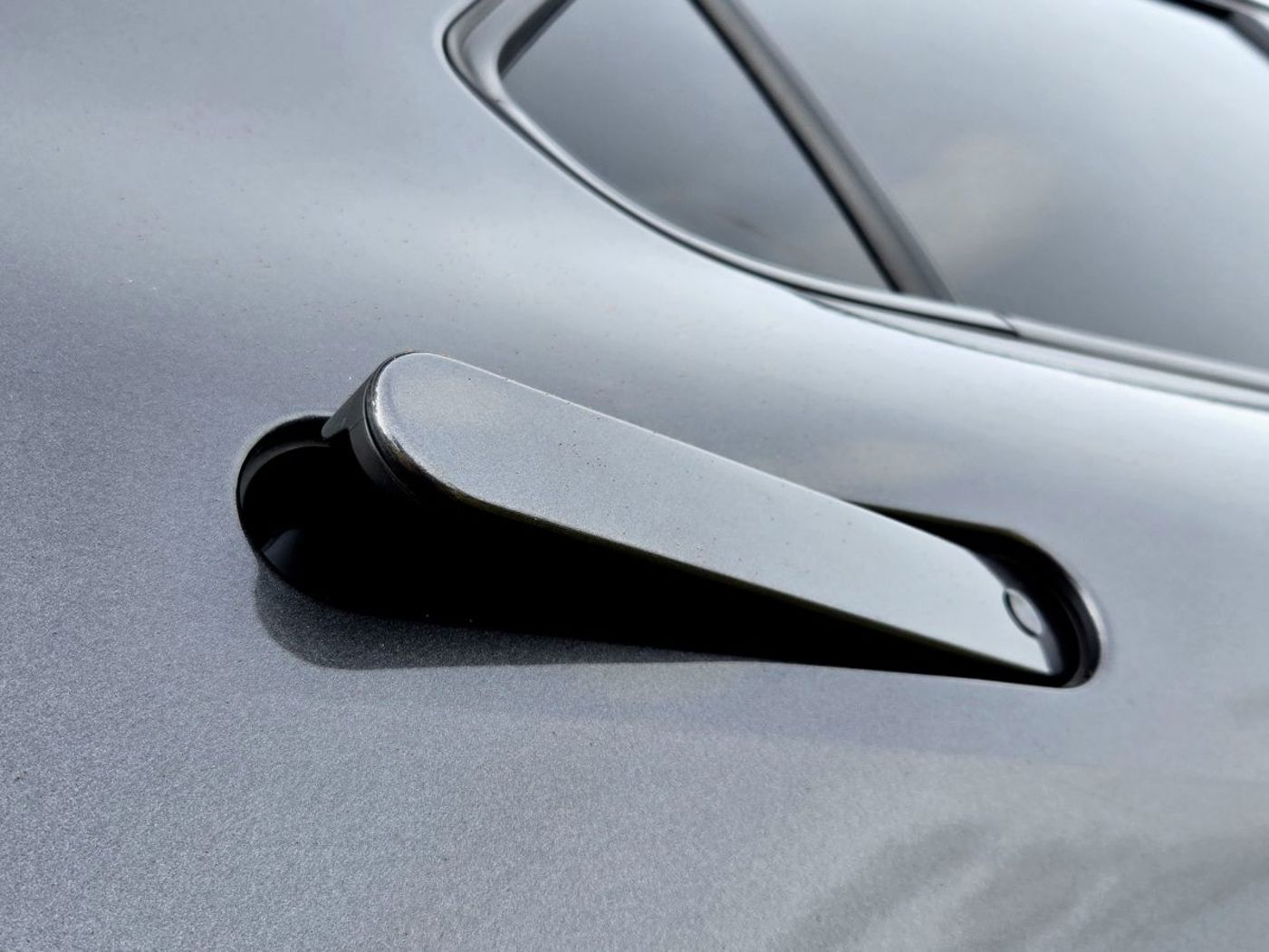
So, what are you getting in the Limited for the extra $3k over the GXL? All three non-GR Sport models have the same 1.8-litre hybrid powerplant, with lithium-ion battery and electric motor. The safety setup is also the same, with the full Toyota Safety Sense package standard across the range: autonomous braking with the latest pedestrian, cyclist and pedestrian detection, Intersection Turn Assist and Emergency Steering Assist; all the very latest stuff, including the dreaded Driver Monitor Camera, although we’ve found it well-calibrated and decidedly non-annoying in the short time we’ve been driving the car. That’s a rarity.
The C-HR appeals because it’s not entirely sensible (neither are we, in case you hadn’t guessed).
Adaptive cruise and a clever self-parking feature is also standard across the range. But more about those as our time goes on.
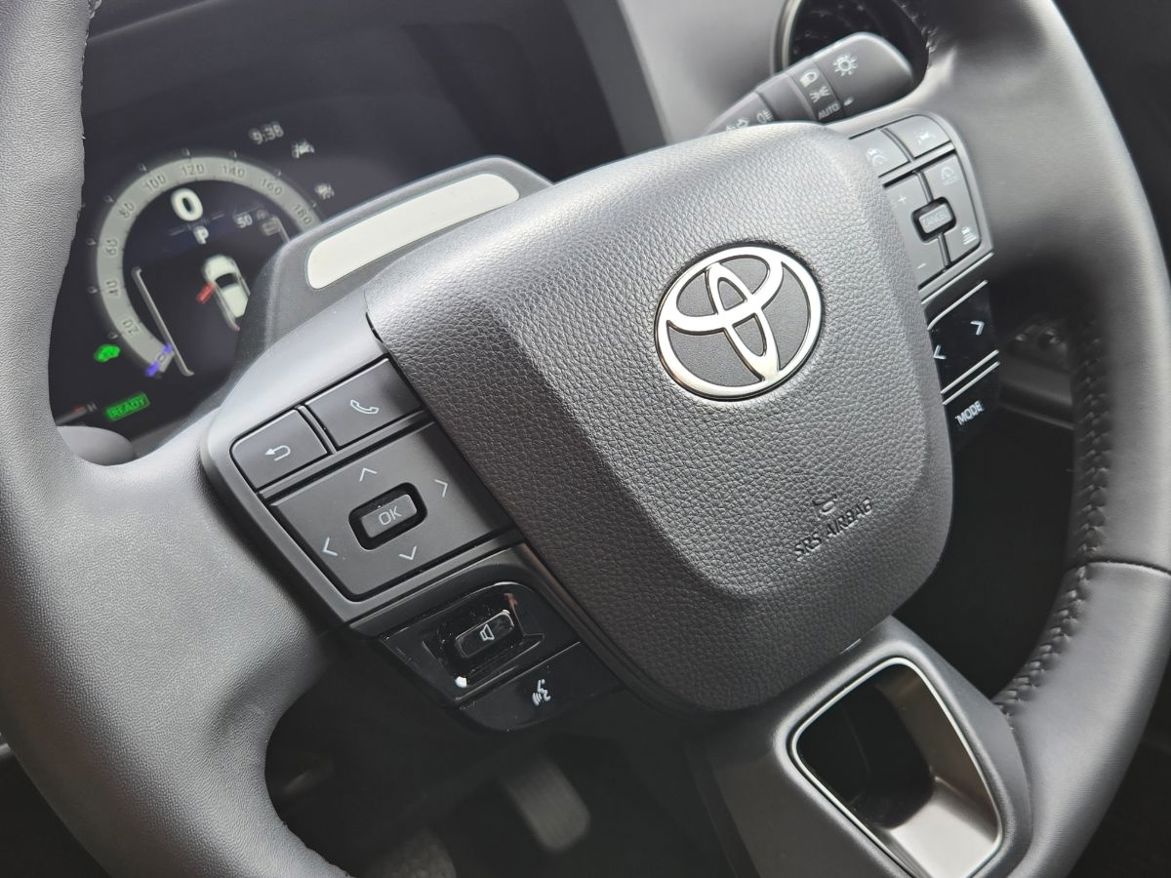
Anyway, Limited. The GXL picks up a fancier full-colour instrument panel (all models have the 12.3in infotainment with wireless projection, though), wireless charger, heated front seats, 18-inch alloy wheels and “wraparound” daytime running lights.
Our Limited adds heating for the steering wheel, head-up display, leather-accented seats and a panoramic roof. None of it strictly necessary (in which case, you might be happy with the GXL), but all nice to have. And 100% of the editorial team agree that the Limited’s higher-powered 9-speaker JBL audio is an absolute must.
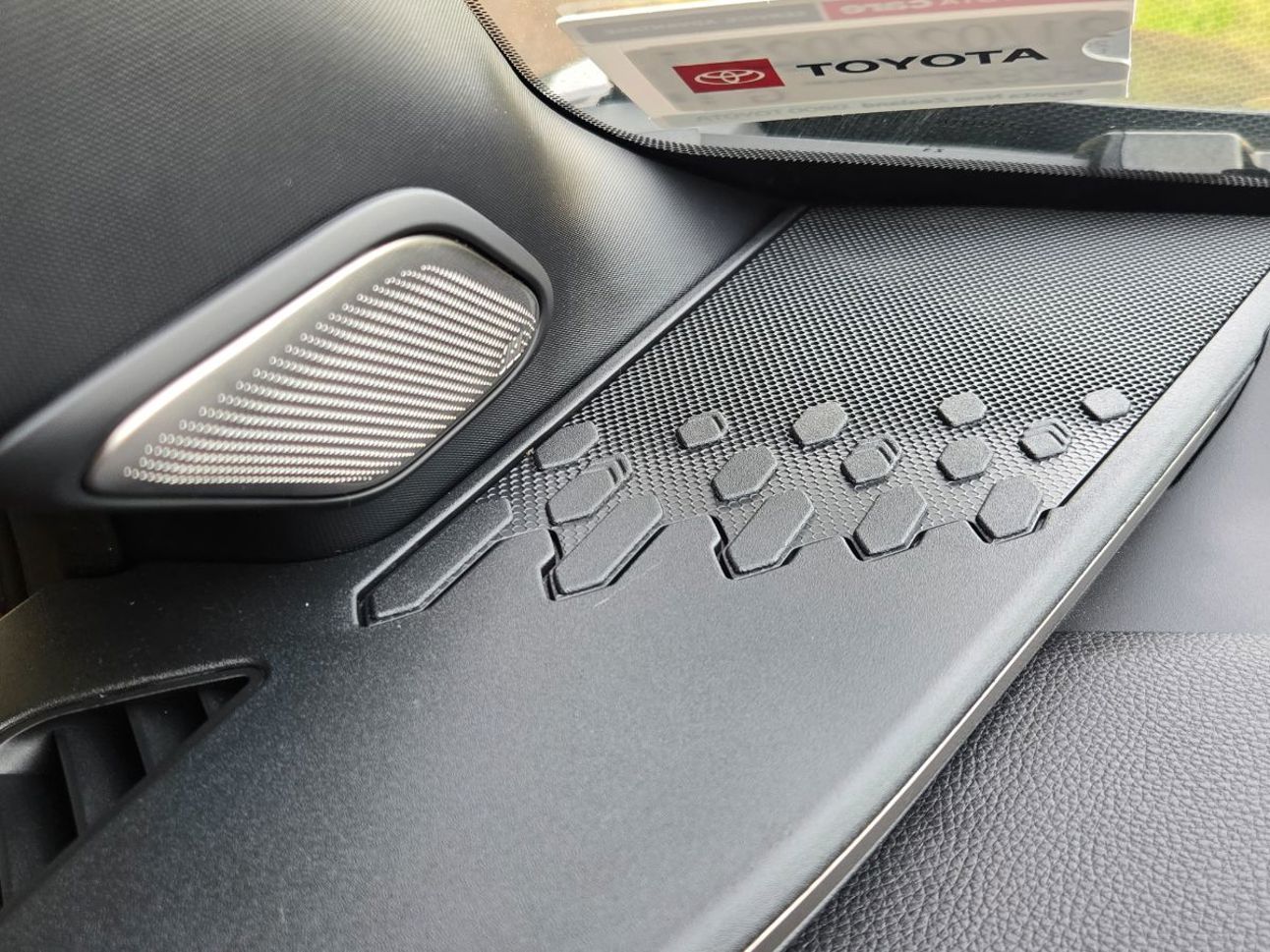
We’re also pretty happy with the powertrain, even though the GR Sport seems to offer a lot more on paper, with a larger 2.0-litre engine, more power and all-wheel drive. Know what? It doesn’t feel that different to drive (nor does it use any more fuel, to be fair).
Really, all we’d like to add to our Limited is the awesome Two Tone Plus paintjob that’s such a feature of this new model. It’s the rather striking livery that combines the body colour with glossy black finish of everything aft of the rear doors (plus the roof, maybe that’s the “plus” bit).
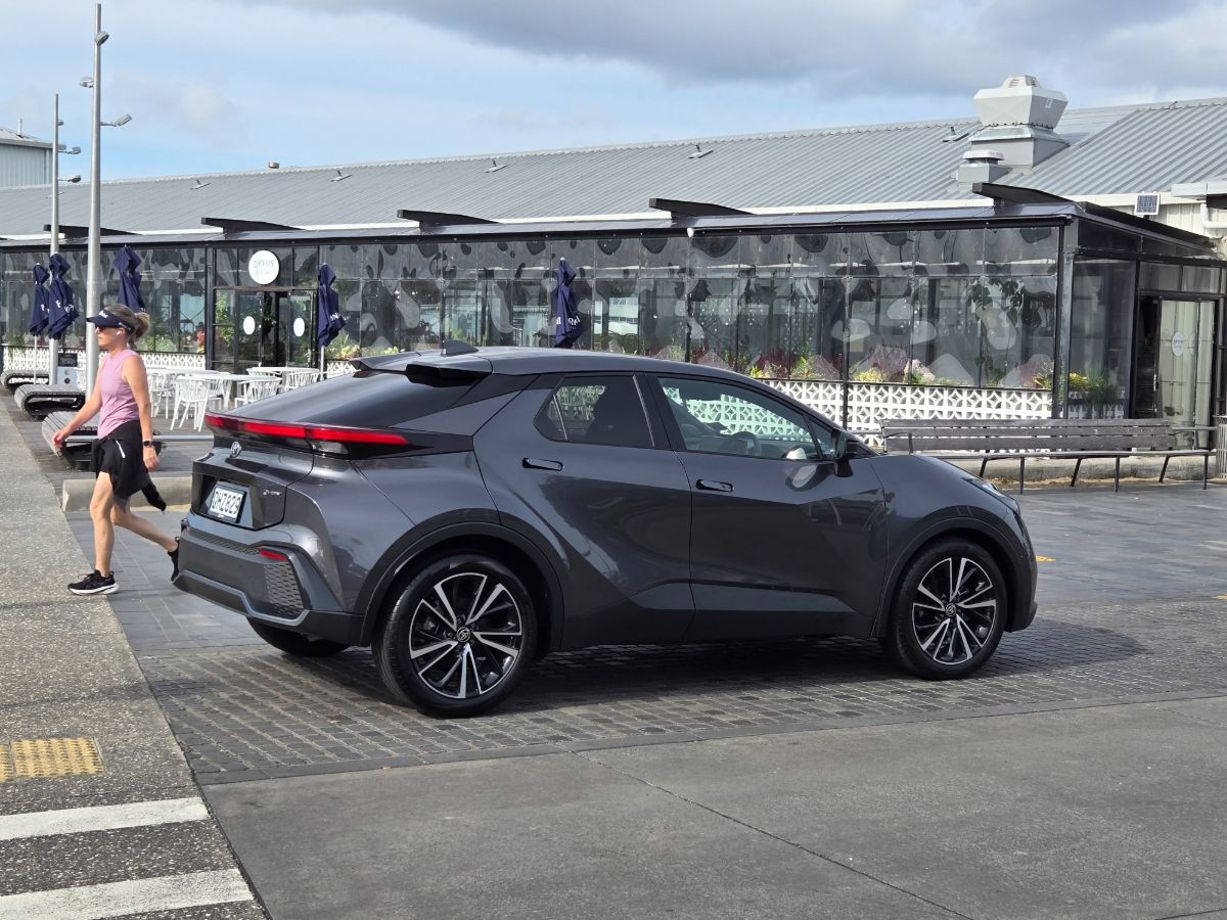
Two Tone Plus is only available on Limited and GR Sport ($1000), which is another to reason to step up to the higher-priced model. To be fair, it’s only available in certain combinations and it’s not offered with our car’s dark Graphite paint colour, which is a shame because it would look awesome: dark with even darker is an interesting effect.
We know this to be true because you can have the C-HR Limited Two Tone Plus in Dark Teal, as well as Silver Rush, Frosted White and Sulphur, which is that lurid hue used for a lot of the promotional material.
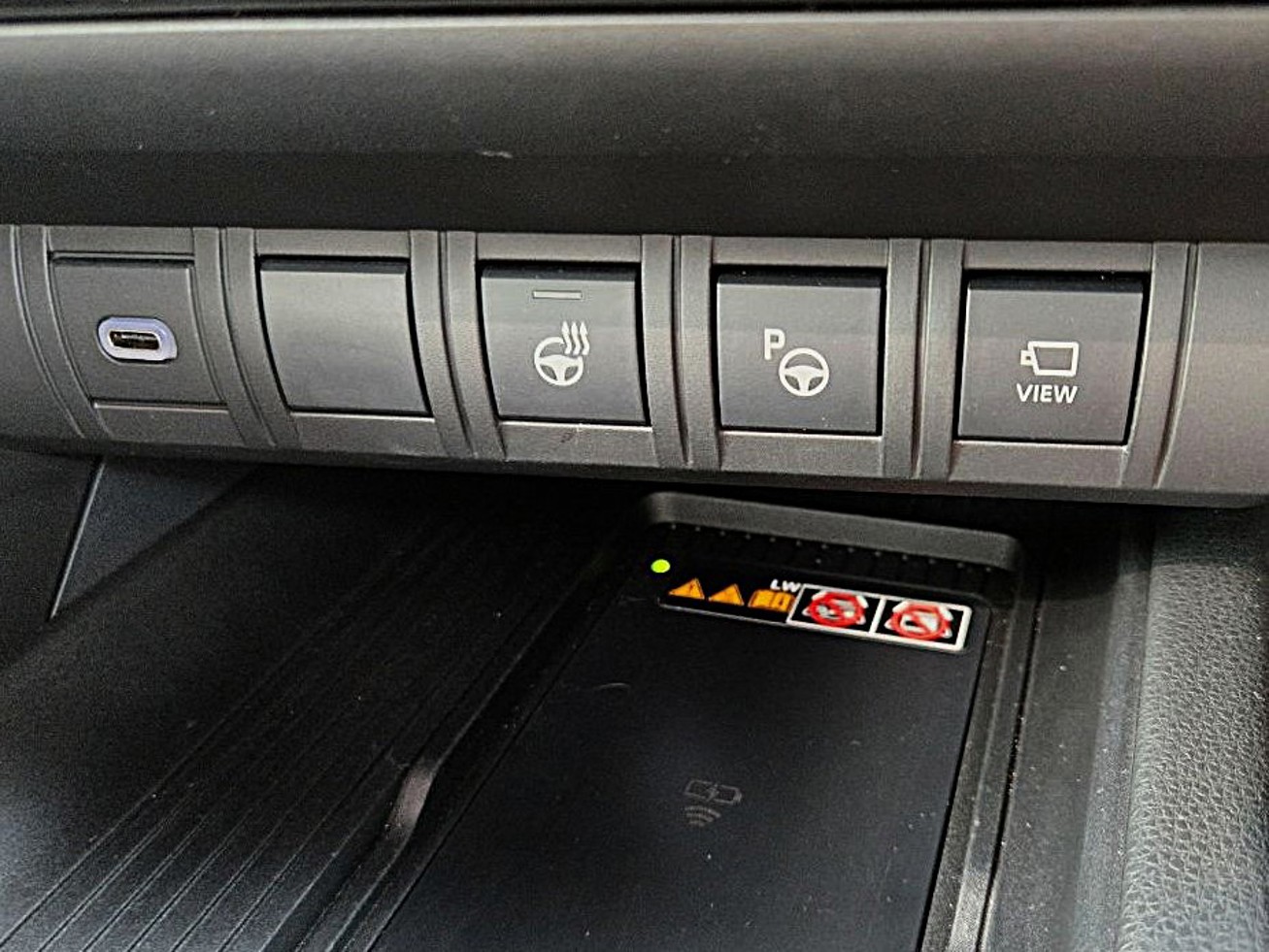
It’s a slightly different palette for the GR Sport Two Tone Plus: same Silver Rush and Frosted White, but also Ash Grey and Emotional Red (which is borrowed from “real” GR cars like the Yaris and Corolla, cheeky).
So we’re just getting started with our new C-HR, but it appeals because it’s not entirely sensible (neither are we, in case you hadn’t guessed). The original C-HR of 2016 was conceived as a more aspirational small-car that put design and driving dynamics ahead of practicality. Toyota even went all out to ensure that the cabin touchpoints were different to other models, right down to some bespoke switchgear – a massive decision from a company that’s legendary for its cost-saving component-sharing.
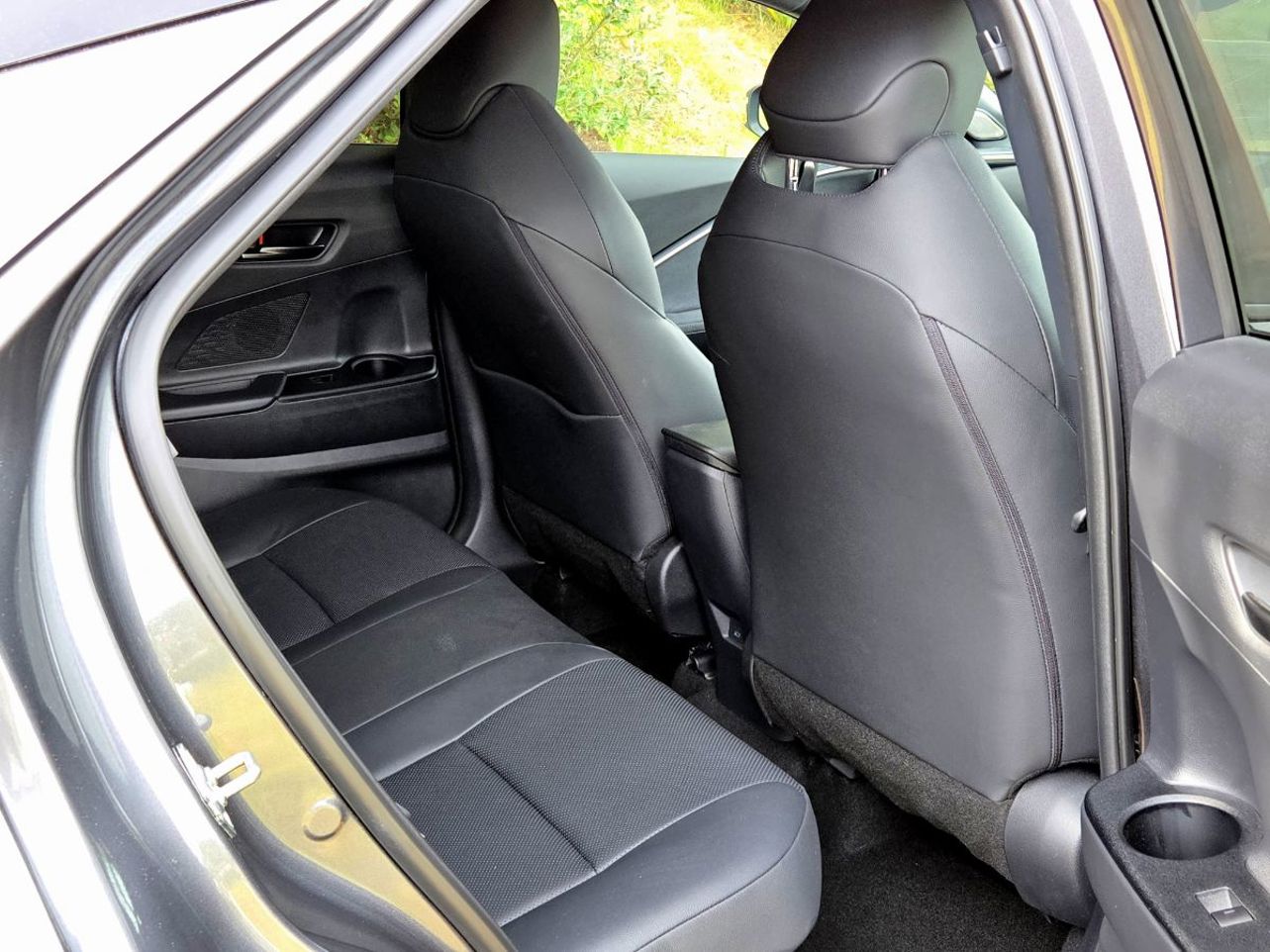
The new second-generation version shares a lot more with other Toyotas, but that individualistic spirit is still evident. The wacky exterior styling continues and yes, it does compromise rear-seat space and cargo-carrying ability, but much less so than the previous model.
There are a few EV-style techy touches on the outside, too. The flush doorhandles pop out automatically (but why such a “clunk” from inside the cabin when they close?) and there’s something approaching a light bar at the back with an illuminated “Toyota C-HR” logo in the garnish.
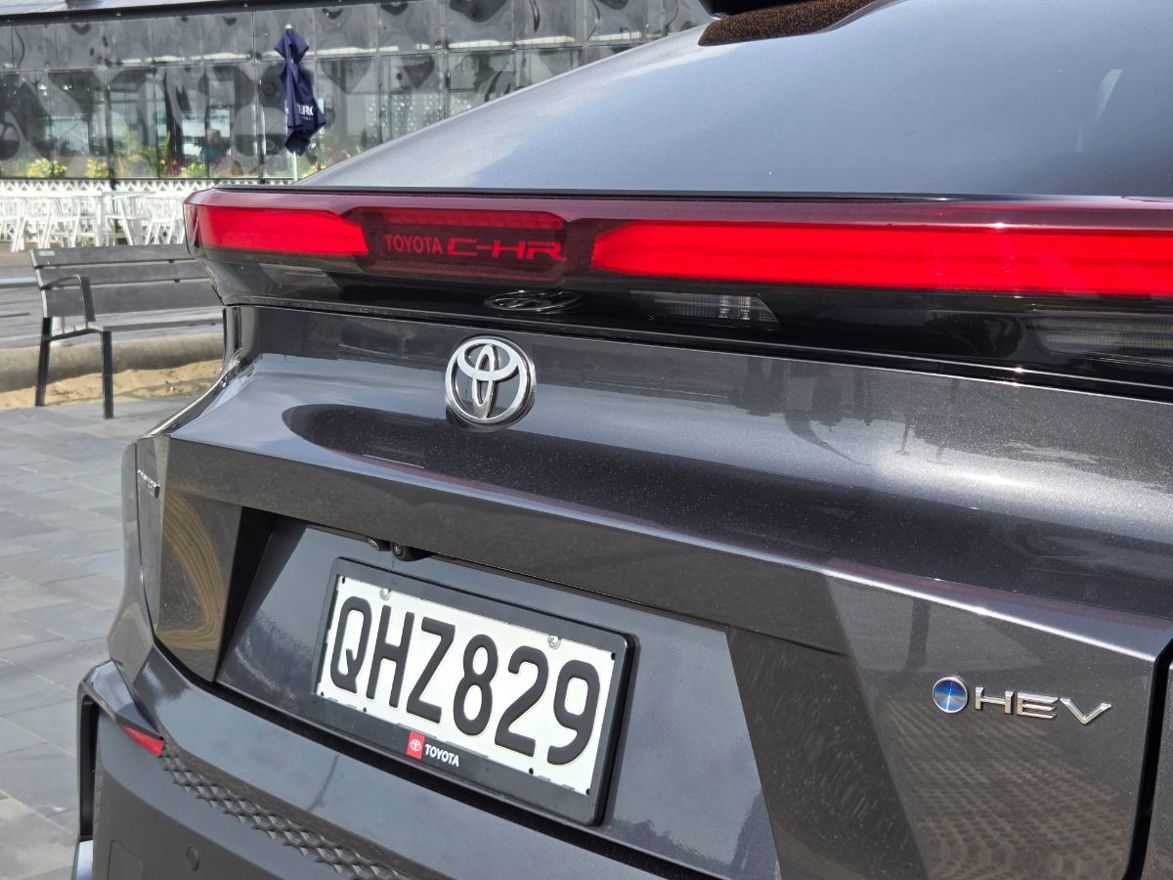
The cabin is arguably the nicest and best-finished of any mainstream Toyota crossover, with an extremely high level of build quality and some lovely detail touches.
It’s supposed to feel just a little indulgent (yes, yes, we know it’s just a small Toyota), because it’s a model designed around want rather than need. It’s larger than a Yaris Cross but smaller than a Corolla Cross and really, it doesn’t need to exist at all. But it does, and it’s been successful enough globally to warrant this second-generation model.
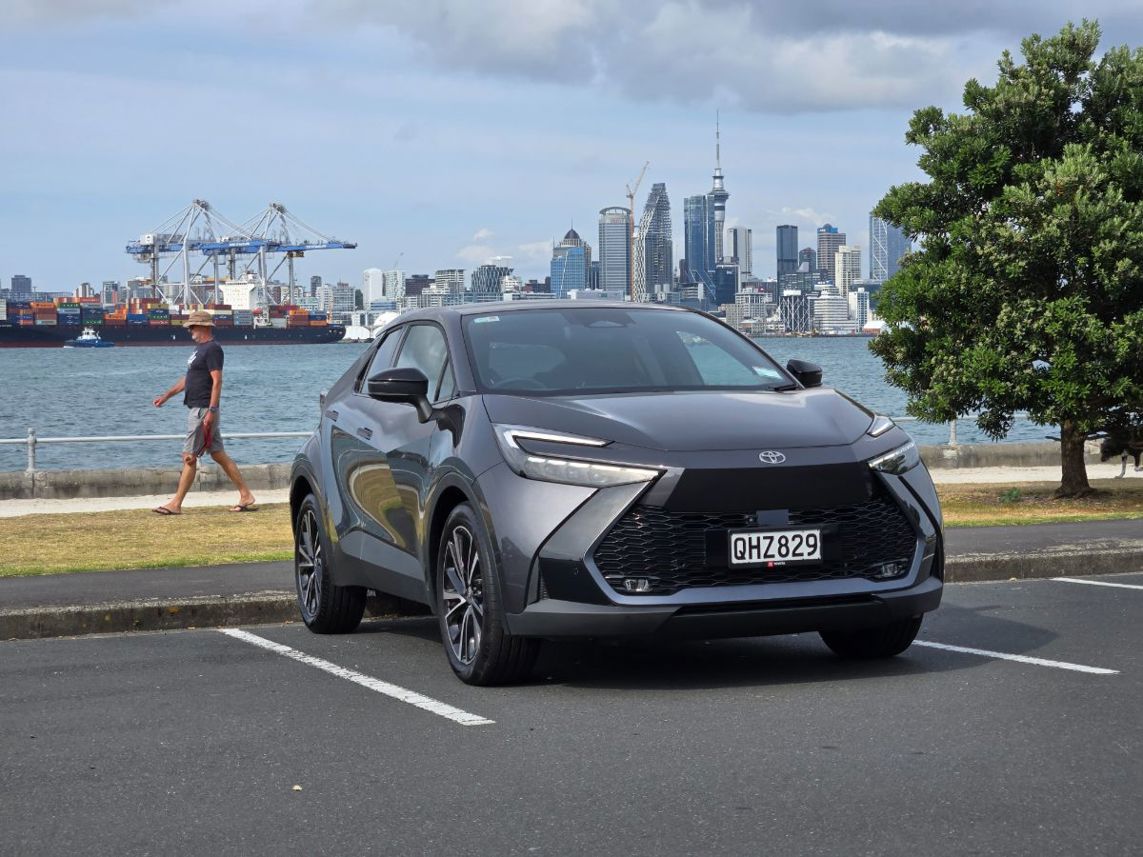
Where to from here? Driving, living with the Cross-Hatch Runabout, Compact-High Rider or Coupe-High Rider (all have been mooted as the real meaning behind the C-HR’s mysterious name). We’ll keep you posted.
What is the Toyota C-HR?
A Toyota compact-SUV with hybrid technology that's supposed to be as much about fashion as function.
Why are we running it?
To see how well those two things really go together in day-to-day driving.





